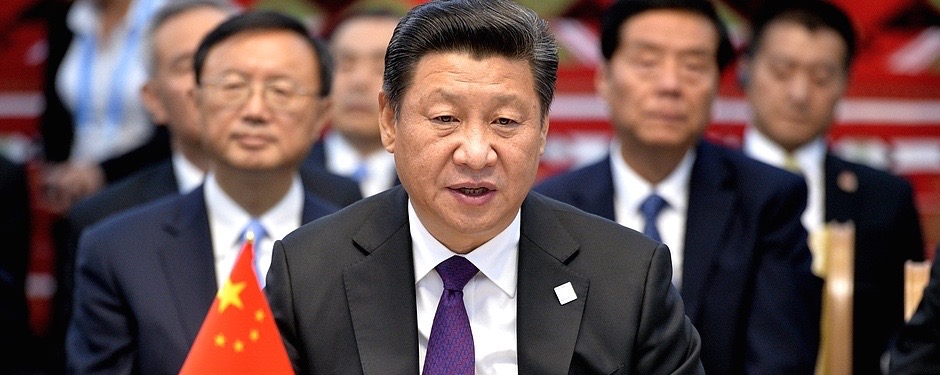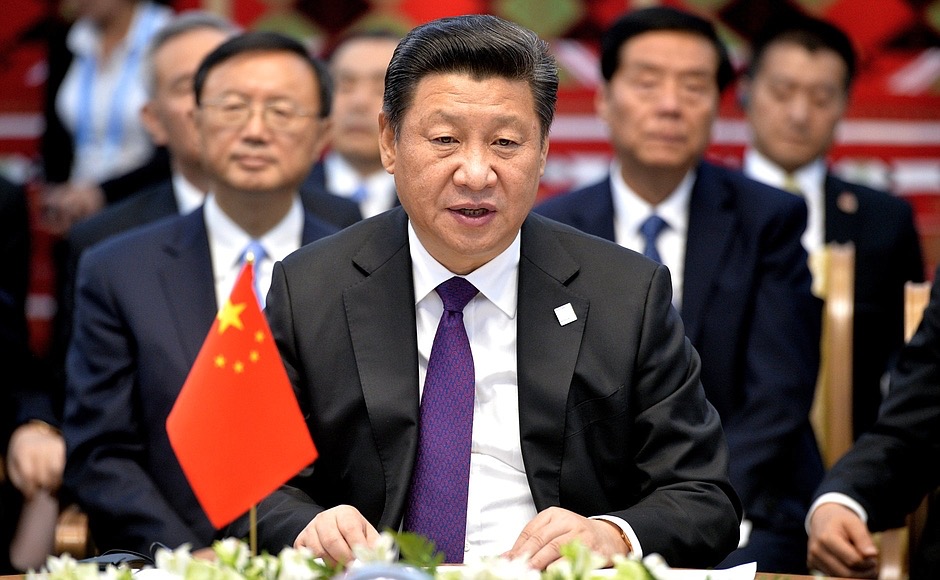
By Edmund Balogun. Edmund is a graduate of The City University of New York: City College has a keen interest in foreign policy and international relations, and is well-versed in research, & data analysis. He has been published several times and has worked as a research intern at the United Nations. Connect with Edmund on LinkedIn: https://www.linkedin.com/in/edmundbalogun

Abstract
French revolutionary Napoleon Bonaparte once referred to China as a “sleeping giant, whose awakening would astonish the world” (Lee 2007). China’s economic and military growth over the last two decades has put the country on the world stage with great powers like the United States, Europe and Russia. Today, China has become the world’s second largest economy and continues to dominate in manufacturing and exports. China’s growth has been rapid, strategic and peaceful. For many scholars and policymakers around the world, China’s rise does not come as a surprise. The country’s development began in 1978 with Deng Xiaoping’s “opening up” policy, which laid foundations for both cultural and economic reforms (Weil 2009, 222). Since 1978, China has maintained an average gross domestic product (GDP) of about 9.8 percent and is expected to surpass the United States as the world’s largest economy by 2030 (Goswami 2013, 4).
A Liberal Perspective
Liberals have a different perspective of China’s rise. They believe in interdependence and democratic peace, and acknowledge the presence of state actors, individuals, and non-governmental organizations (NGOs) in the international system. From this view, neoliberals (liberals who emphasize economic integration) see China’s rise as an integration into a “peaceful world system through economic and diplomatic engagement and a web of normative obligations” (Xie and Page 2010, 481). Liberal theorists argue that China’s contribution to pro-western international institutions like the United Nations, the International Monetary Fund (IMF) and the World Bank Group (WBG) suggests China is less likely to engage in conflict with status-quo powers in the international system (Hudda 2015). China’s membership with international organizations has doubled in the last two decades, with a presence in multiple regional organizations and over 50 international organizations. In an interview with the Berggruen Institute (an institute that advocates good governance) in 2010, President Xi Jinping called attention to Chinese contributions international and regional organizations as well as the country’s commitment to the rules and norms of these organizations. China’s involvement in international organizations aligns with liberal views on interdependence, cooperation, and economic integration.
Economic interdependence reduces the risk of conflict, thus liberals believe that if China continues to trade with countries like Japan and the United States, chances of military disputes are minimal (Weede 2010, 209). In East Asia, Japan has become one of China’s most important trading partners, even though both countries were adversaries during the Pacific War (Jerden and Hagstrom 216). China has also established free trade agreements with organizations like the Association of Southeast Asian Nations (ASEAN). Considering China’s commitment to free-market economics, many liberal theorists argue that democratization of China’s political system is not far behind (Denny Roy 2009, 25).
In terms of political integration, China’s actions do not strongly align with liberal views; rather they seem to align more with realists’ assumptions of China. The former British Governor of Hong Kong, Chris Pattern said in an interview with the BBC that China’s success promotes the idea that one could get rich without attaining democracy (Xing 2012, 15). According to Denny Roy, a Senior Fellow at the East-West Center, Honolulu, “China still sees the broad civil liberties that Westerners identify with democracy as destructive of the highly valued objective of social and political stability” (Denny Roy 2009, 27) and asserts that Chinese Communist Party (CCP) leaders have no intention of switching to a multiparty system. Although China still operates in a one-party system, some liberals argue that Chinese leaders have tried to make the government more transparent by allowing press freedom and becoming more open to public opinion. Minxin Pei, a Chinese scholar, noted that the CCP is eager to show the Chinese people that their government is well integrated in the international community; for this reason, the Chinese government spent immense political capital to get foreign leaders to attend the 2012 Beijing Olympics opening ceremony (28).
China is not yet a full democracy, however, liberals argue that the possibility of a power struggle in the international system is negligible, given China’s free trade agreements with countries within its region and beyond. China’s advancement on the world stage has paved the way for liberal scholars around the world to push for a more democratic system of governance. Liberal scholars point to the establishment of pro-western liberal think tanks like the Australian Group at Peking University in Beijing, as crucial in displaying China’s rise as peaceful and democratic.
A Realist Perspective
While China claims its rise is that of “peace and development” (Yang 2013, 36), Western powers like the United States remain skeptical and have continued to monitor China’s actions. Realists like Hans Morgenthau and Kenneth Waltz, who believe that the international system is anarchic and that great powers compete to gain dominance, argue that China’s military expansion suggests a hegemonic pursuit. Namrata Goswami, a Senior Fellow at the U.S Institute of Peace (USIP), predicts “China will become even more aggressive in East Asia.” In a report presented to the U.S. Congress by the Department of Defense in 2009, China’s military spending surpassed that of the United States by over $70 billion. The report concluded that China’s military forces have developed disruptive technologies, which had implications beyond the Asia-Pacific region (Xie and Page 2010, 491). In November 2012, Chinese President Xi Jinping declared the “Chinese Dream;” a grand process of national resurgence as a global power. This prompted a dictum from retired Chinese Colonel Liu Mingfu of the People’s Liberation Army (PLA) that China needs to overtake the United States as the world’s greatest military power (Hudda 2015). Such remarks from Chinese leaders are controversial and continue to fuel realists’ assumptions that China is attempting to gain global dominance and change the world order. Given the realist perspective that states act only in self-interest and compete for power in a zero-sum game, China’s continued approach to dominate Taiwan and its alignment with repressive regimes like North Korea, Iran and Russia, support realists’ claims that China’s rise might lead to “conflict with status-quo” great powers (493).
John Mearsheimer, a realist scholar, suggests that if China continues to expand its military capabilities, it will become “an aggressive state determined to achieve regional hegemony” (Kirshner 2010, 59). The United States’ polices to foster trade with China are “misguided and doomed to fail,” according to Mearshiemer, who advocates tougher scrutiny of Chinese policies by the U.S. (60). The United States’ strategy to contain China has been criticized by countries like Australia and South Korea, who have embraced China as a strong ally and trading partner. When former U.S. Secretary of State, Condoleezza Rice expressed growing concerns about China’s rising military power, her Australian counterpart, Alexander Downer was quick to warn against any U.S. attempt to contain China (Xie and Page 2010, 491).
It is important to note that realism inculcates various schools of thought. While most realists share the same views on anarchy and the selfish nature of states, classical realists argue that a state’s behavior is shaped by history, fear and uncertainty. Classical realists like Edward H. Carr “place great emphasis on politics, domestic and international, and even consider the role of like ideas, norms, and legitimacy” (Kirshner 2010, 68). Thus, classical realism might provide a more rational perspective of China’s rise as a world power. In the European Journal of International Relations, Jonathan Kirshner notes in his article The tragedy of offensive realism: Classical realism and the rise of China, that there is no good reason to believe that if China is a rational actor, motivated primarily to survive, it would embark upon a bid for hegemony.
China’s Realist Manifesto in Practice
As a realist scholar, Morgenthau notes in his principles of political realism that states exhibit interests in terms of power (Viotti and Kauppi 53). China has increasingly used its economic power to build partnerships globally, dominating Western investments. These partnerships have increased China’s influence and popularity, especially in South America and Africa. In Ecuador, for example, Chinese investments amount to about a quarter of the country’s economic output (Aisch, Keller and Lai 2015). China’s global investments strongly point to a realist state, determined to attain hegemonic dominance through economic integration and alliance with weaker states.
Given the realist assumption that great powers are defined not just in terms of military capabilities or geo-politics, but also in terms of economic strength. China’s recent economic downturns might suggest a weakness not inclined to a realist state. However, a tenet of realism is that states do what they must to maintain dominance. China recently took an aggressive step to devalue its currency, an action that can be associated with the realist balance of power theory, which posits that states select “the alternative that maximizes utility (maximizing benefit or minimizing cost associated with attaining the objectives sought)” (Viotti and Kauppi 40). In defense, the Chinese administration maintained that decision was intended to make “the currency more market-oriented” (Gough 2015). Although China has substantial funds to withstand serious financial downturns, the country’s economic stability has global implications.
References
Aisch, Gregor, Josh Keller, and K.k. Rebecca Lai. 2015. ‘The World According To China’.Nytimes.Com. http://www.nytimes.com/interactive/2015/07/24/business/international/ the-world-according-to-china-investment-maps.html.
Goswami, Namrata. 2013. ‘Power Shifts In East Asia: Balance Of Power Vs. Liberal Institutionalism’. Perceptions XVIII (1): 3-31.
Gough, Neil. 2015. ‘Devaluation Hints At China’s Rising Distress Over Economy’. Nytimes.Com.http://www.nytimes.com/2015/08/13/business/international /chinese-economic-vigor-is-disputed.html?_r=0.
Hudda, Nabil. 2015. ‘Interpreting The Rise Of China: Realist And Liberalist Perspectives’. E-International Relations. Accessed May 7. http://www.eir.info/2015/04/03/interpreting-the-rise-of-china-realist-and- liberalist-perspectives/
Jerdén Björn, and Linus Hagström. 2012. ‘Rethinking Japan’s China Policy: Japan As An Accommodator In The Rise Of China’. Journal Of East Asian Studies 12 (2): 216.
Kirshner, J. 2010. ‘The Tragedy Of Offensive Realism: Classical Realism And The Rise Of China’. European Journal Of International Relations 18 (1): 53-75.
Krauss Clifford, and Keith Bradsher. 2015. ‘China’s Global Ambitions, With Loans And Strings Attached’. Nytimes.Com. http://www.nytimes.com/2015/07/26/business/international/chinas- global-ambitions-with-loans-and-strings-attached.html.
Lee, Joseph Tse-Hei. 2007. ‘The Rise Of China: An Introduction’. Indian Journal Of Asian Affairs 20 (1): 1-4.
Roy, Denny. 2009. ‘China’s Democratized Foreign Policy’. Survival 51 (2): 25-40.
Viotti, Paul R, and Mark V Kauppi. 2011. International Relations Theory. Harlow: Pearson Education.
Weede, Erich. 2010. ‘The Capitalist Peace And The Rise Of China: Establishing Global Harmony By Economic Interdependence’. International Interactions 36 (2): 206-213.
Weil, Robert. 2009. “Class Bases of Chinese “Marxisms” Today” Science & Society 73 (2): 221-228.
Xie, Tao, and Benjamin I. Page. 2010. ‘Americans And The Rise Of China As A World Power’. Journal Of Contemporary China 19 (65): 479-501.
Xing, Li. 2012. ‘The Rise Of China And The Capitalist World Order: The “Four-China” Nexus’, 13-15.
Yang, Shih-yueh. 2013. ‘Power Transition, Balance Of Power, And The Rise Of China: A Theoretical Reflection About Rising Great Powers’. China Review 13 (2): 35- 66.

 The ’Ndrangheta’s Infiltration and Threat to European Institutions
The ’Ndrangheta’s Infiltration and Threat to European Institutions  From Paper to Practice: How Grassroots Norms Undermine Gender Rights in Pakistan
From Paper to Practice: How Grassroots Norms Undermine Gender Rights in Pakistan  Exploited Childhoods: The Role of Global Corporations in Perpetuating and Mitigating Child Labour
Exploited Childhoods: The Role of Global Corporations in Perpetuating and Mitigating Child Labour  Human Rights Challenges in Addressing SLAPPs in Media, NGOs and Journalism in the EU
Human Rights Challenges in Addressing SLAPPs in Media, NGOs and Journalism in the EU 


